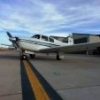High CHT's on Takeoff
-
Members Online
- Rick Junkin
- finnicky7
- tony
- BeachLifeMoon
- FoxMike
- BrianWilkins
- Paul Thomas
- N201MKTurbo
- BlueSky247
- Rogerg
- Ronnie Pool
- Rmfriday
- BNix
- Igor_U
- raymondscott0321
- Hank
- TCC
- Larry
- RescueMunchkin
- jetdriven
- Shadrach
- bamace
- 1980Mooney
- Sue Bon
- jamesyql
- TStepp
- Pasturepilot
- KSMooniac
- Yetti
- FlyingScot
- Zorro
- Nilium
- AndreiC
- ToddCC22
- PT20J
- Jsno
- 201Mooniac
- 231DF
- sdmideas
- Grant_Waite
- flightrisk325
- MoonMech
- YeloSub
- spaceman39a
- Mobius708
- geoffb
- Scottknoll
- Steve Hughes
- mooniacX
- Fly Boomer


Recommended Posts
Join the conversation
You can post now and register later. If you have an account, sign in now to post with your account.